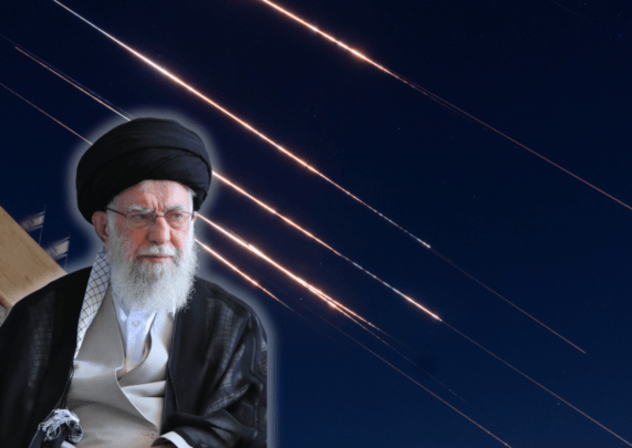ANALYSIS: Iran's Nuclear Program Puts Spotlight on Regime's Dueling Realities of Defiance and Vulnerability

A cascade of recent events—from stark warnings issued by international nuclear watchdogs to damaging admissions by Tehran and public displays of military vulnerability—has reignited intense scrutiny of Iran's nuclear ambitions. The developments have brought into sharp relief the widening chasm between the regime's official narrative of a peaceful energy program and a growing body of evidence suggesting a deceptive, militarized, and increasingly paranoid state apparatus.
An Unstoppable Threat?
The technical and military dimensions of Iran's nuclear program are now being discussed in increasingly blunt terms by Western officials. According to public testimony from the United States' top general, a key Iranian nuclear facility at Isfahan, believed to hold nearly 60% of the country's enriched uranium, is now buried too deep to be destroyed by conventional 'bunker-buster' munitions. This assessment frames the Iranian nuclear threat as a potentially permanent and militarily entrenched reality.
This sentiment was amplified by the head of the International Atomic Energy Agency (IAEA), who recently confirmed that Iran possesses the capability to produce enough fissile material for several nuclear weapons, estimating a breakout time of weeks, not months. The IAEA chief also noted that the agency has lost track of a significant stockpile, estimated at 900 pounds, of highly enriched uranium, leaving its current location unknown. Military analysis further confirmed that recent strikes attributed to Israel successfully destroyed Iran's Uranium Metal Conversion Plant, a site explicitly identified as a necessary component for one of the final steps in manufacturing the core of an atomic bomb. While this dealt a blow to weaponization efforts, recent satellite imagery suggests that repair operations may have already commenced at another location, indicating a determined resilience to continue the program despite setbacks.
Tehran has consistently maintained that its nuclear activities are solely for peaceful energy production. In official statements, Iranian officials have decried what they call a Western campaign of misinformation, insisting their program is transparent and compliant with their rights under international treaties. However, these claims are increasingly difficult to reconcile with the physical and political realities on the ground.
A Pattern of Non-Compliance
The most direct challenge to Iran's narrative of peaceful cooperation has come from its own actions regarding international oversight. The regime has taken the overt step of banning senior IAEA inspectors and ordering the removal of surveillance cameras from its nuclear facilities. This move effectively blinds the international community to its activities at critical sites.
In an extraordinary public justification, Iranian officials admitted this policy of non-compliance was a direct response to a catastrophic security failure. They claimed the measures were necessary because Israel had obtained 'sensitive facility data' from the IAEA's network, an admission that not only confirms a major intelligence breach but also provides a self-incriminating reason for obstructing inspectors. For critics of the regime, this justification serves as a de facto admission that there is something sensitive to hide, directly contradicting claims of a purely civilian program.
The Civilian Mask Removed
For years, the Islamic Republic has labored to maintain a strict separation in its public messaging between its civilian nuclear scientists and its military establishment, particularly the Islamic Revolutionary Guard Corps (IRGC). That carefully constructed narrative appears to have been deliberately dismantled by the regime itself.
Following a series of targeted assassinations and explosions, massive state-sponsored funerals were held in Tehran. As international media reported, these events publicly mourned top nuclear scientists alongside high-ranking military officials, including the head of the armed forces, a top IRGC Quds Force commander, and the regime's ballistic missile chief. The shared funeral rites and the regime's own media coverage irrefutably linked the IRGC's top command and its ballistic missile program—the presumed delivery system for a nuclear weapon—with its supposedly 'peaceful' nuclear program, destroying the official narrative of a civilian enterprise in the eyes of many international observers.
A Public Display of Weakness
While projecting an image of defiance abroad, the regime has been forced to publicly display its own vulnerabilities at home. In what analysts described as a significant propaganda misstep, a close aide to the Supreme Leader, Ali Shamkhani, was featured on state television in an apparent attempt to prove he had survived a recent precision strike.
However, the visual provided a far different message. Shamkhani appeared visibly injured, relying on a walking stick and using a breathing aid. During the interview, he confirmed his home had been destroyed. Instead of projecting strength and survival, the segment provided a humiliating and undeniable visual of the regime's inability to protect its highest echelons, sending a message of vulnerability, rather than resilience, to both domestic and international audiences.
This external pressure has been mirrored by an intense internal crackdown. State media has endorsed what has been termed a 'season of traitor-killing,' with the regime carrying out speedy executions of its own citizens accused of spying for Israel. Observers note that this paranoid hunt for internal enemies suggests a regime under immense pressure, using the external conflict as a pretext for a brutal campaign to enforce loyalty and silence dissent.
As the standoff continues, the Iranian regime is now fighting a war on two fronts: one against external adversaries and another against a reality of its own making. The ultimate question looming over the international community is whether a regime so openly engaged in deception, and so demonstrably vulnerable, can be trusted with a program that even its adversaries admit they may no longer be able to stop.

